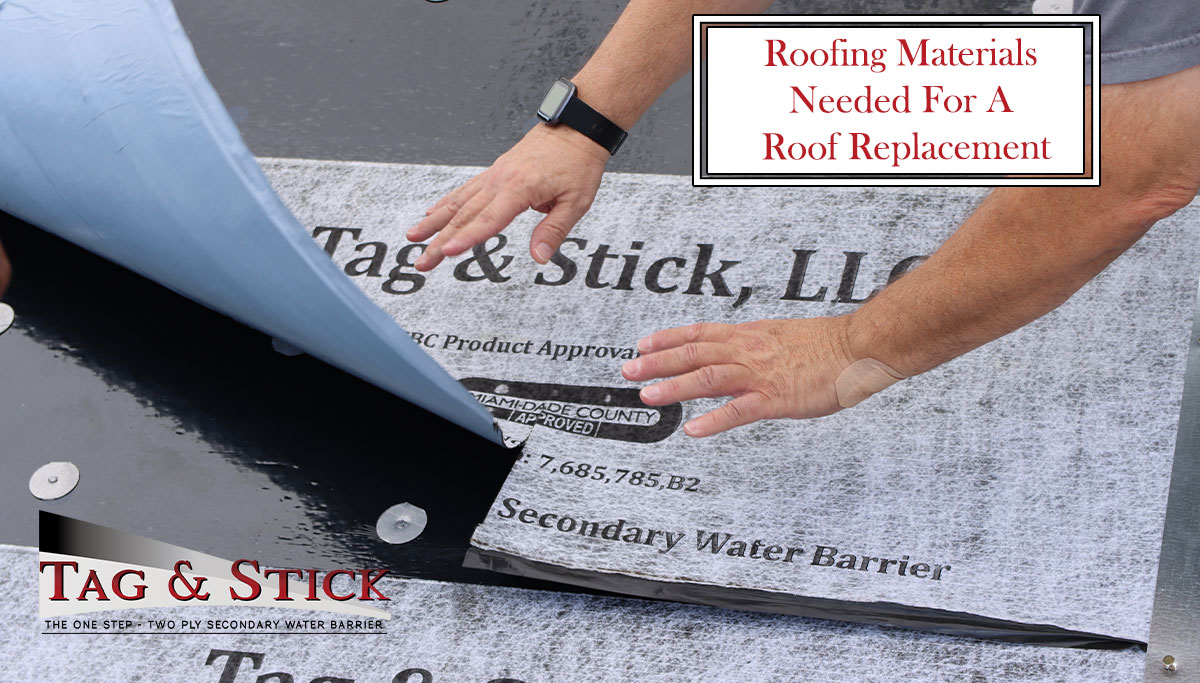Roofing Materials Needed For A Roof Replacement

When it comes to roofing, there’s more than what immediately meets the eye. There is a lot that goes into making a solid and durable roof. The roof on your home is more of a roof system than just what you can see. Sure, the roof covering is an important part of your roof, but as you’ll find out, it’s only one of the components required.
Let’s have a look at 5 of the most important roofing materials that you’ll need for your roof replacement.
The Essentials
The following roofing materials are non-negotiable if you want a quality, weather-proof roof. Here in South Florida, if you skimp on the following items in terms of quality, it’s only a matter of time before you’ll need to replace your roof again.
1. Roof Decking
This layer consists of wooden boards or panels, usually plywood. They create the foundation where all other parts of the roofing system will be attached. When replacing your roof, your contractor needs to inspect whether the decking is still good.
If the previous roof was not protected against water ingress, there’s a chance that the boards will have rotted. If that’s the case, your roofing contractor will have to replace the damaged boards. If you’re fortunate, most of the decking is still intact. Depending on the type of underlayment installed previously, replacement of many sheets may be unavoidable.
2. Roof Underlayment
Underlayment is your roof’s best friend. It is the primary defensive barrier that keeps moisture away from the decking. Underlayment in South Florida homes also needs to adhere to the strictest of wind uplift codes.
Some underlayments make it impossible for contractors to remove it without delaminating the decking underneath.
You should consider using Tag & Stick’s mechanical attachment with self-adhering technology. With a modified 2-ply layer, installation is simple and robust. Tag & Stick also complies with Florida’s strict wind upliftment codes.
The Helpers
The following materials are needed to assist with smaller areas of your roof. They help keep the roof surface in top condition and protect it from the physical properties of wind and water.
3. Flashing
All roofs will have vents, chimneys, valleys along with areas where two incline planes of the roof meet. In these areas, specific types of flashings are required to support the underlayment.
There are several types of flashing used on a roof. Primarily, the flashings on sloped roof are some form of metal: Galvanized steel, copper, aluminum, etc.
4. Drip Edges, Gutters, and Downpipes
Inevitably, when rain falls in South Florida, it pours. All that water needs to be channeled off the surface of the roof. As a homeowner, you’ll also want to protect the inhabitants, the building and landscaping below from the constant dripping water.
Initially, it is a metal drip edge material which allows the water to kick away from the roof edge. Then the gutters act as canals that collect water and carry it toward the downpipes. The downpipes then drain the water away into the drain, rain-water collection system, or ground.
The Cover
Roofing materials are not only functional, but they can also be aesthetically pleasing too. While cost is always a factor consideration, there are more than a few different types of roof coverings to consider. There is a safe bet that works well with quality underlayment.
Leading Technology Developed In Coral Springs
South Florida’s very own Tag & Stick, LLC is producing industry-leading technology in the roof underlayment space. Our self-adhering, modified 2-ply solution is mechanically attached and 115 mils thick. If you’d like to know more about supply and installation, call us at 954-255–3107.